3 Quick Ways To Tell If A Pearl Is Real Or Not, According to Experts

These days the market is flooded with forgeries and imitations, especially in the gem industry. However, pearls are not an exception. Formerly, pearls were exclusively found in the wild, which made them extremely rare. However, since modern technology started making faux pearls that seem astonishingly accurate, the buying of fake pearls has increased. So, before we move on to the tips to distinguish between real and fake pearls, I will help you quickly get the essential information about Real pearls based on my years of experience in the jewelry industry.
What Are Real Pearls?

The Real pearls and cultured pearls are obtained from pearl-producing oysters in fresh, saline water. This organic jewel can be cultivated or naturally formed. It depends on whether human intervention is present or not. However, most pearls available nowadays are cultured. Natural pearls are rare and are not commercially viable as they are generated without human intervention. They are also known as wild pearls. As a result, now museums are the only places where you can find natural pearls.
What Are Cultivated Pearls?
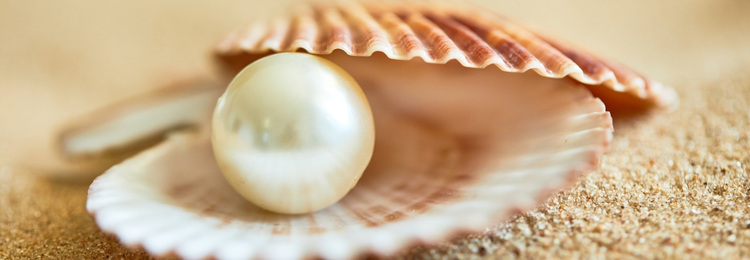
Cultured pearls are contemplated natural pearls even though they are not created naturally. They are formed by human intervention in a cultured pearl sac by inserting material into a mollusk. After which, the mollusk lays down in the concentric layers of the nacre until a pearl is formed.
What Are Freshwater Pearls?
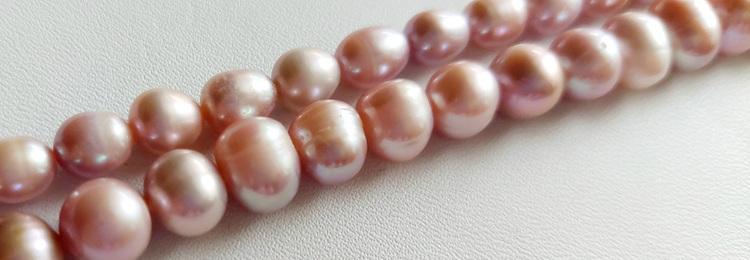
Freshwater pearls are real, and cultured pearls are created using freshwater mussels. They are grown in lakes, rivers, as well as ponds. Most of the freshwater pearls are white.
The unique forms, variety of sizes, and freshwater pearls' hues make them popular. They produce a range of pastel hues, such as pink, lilac, and peach. Chinese pearl farms dominate the Global freshwater pearl market, as it accounts for almost all the freshwater pearls sold nowadays.
Ways To Check Tell Is A Pearl Is Real Or Not
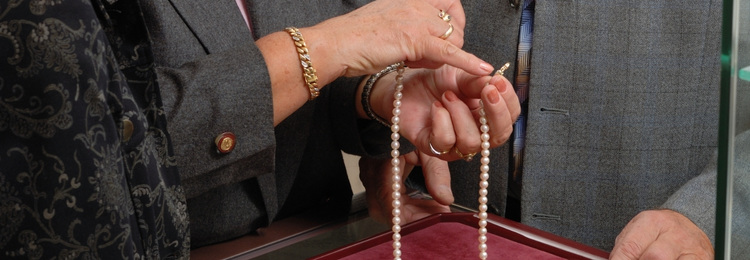
Now, you know about real pearls and cultured pearls. Here, we will discuss and understand the distinction between Real pearls. There are a few tests to check whether your pearls are fake.
1. Visual Tests
● Check Their Uniformity
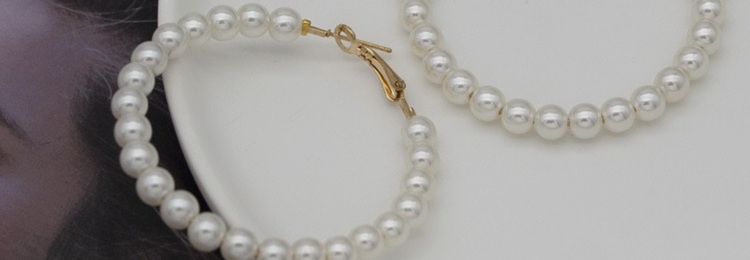
If you are wondering how one can tell if a pearl is real, then you can check the pearl's uniformity. The Real pearls are rarely in perfect shape. So, the first thing you need to look for is minor imperfections. They will have minor flaws or shape irregularities. Additionally, the pearl's exterior nacre layer potentially causes various areas of the pearl to reflect light differently. On the other hand, imitation pearls are "too perfect." They often seem perfectly spherical, have the same degree of shine over their whole surface, and are flawless.
● Check Luster & Shine
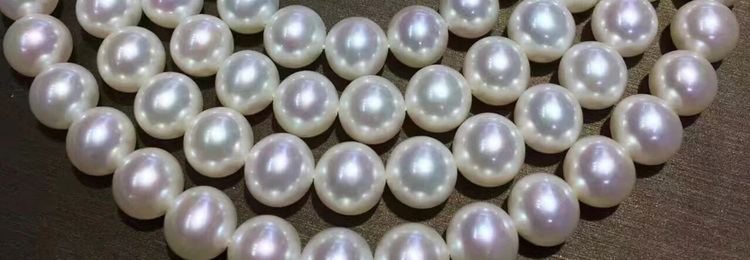
Luster and shine are vital features of real pearls and cultivated pearls that make them look beautiful. Good quality pearls are always bright and shine when exposed to light. They are fake if they don't shine or seem dull when put in the lights.
● Examine color and overtone
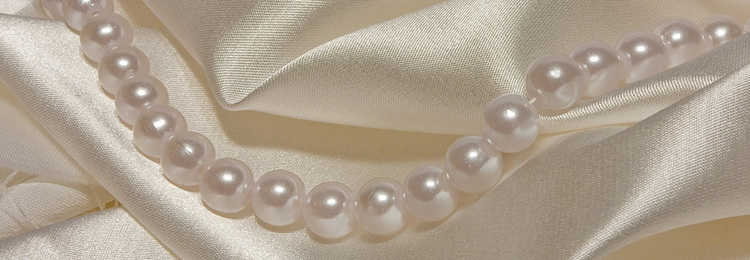
The slight color on the surface of the pearls when light touches them is known as the overtones. This overtone often determines the price of high-quality pearls. So, if you see a tinge of pink and green over the primary color of the pearl, then it is a Real pearl. This overtone effect, which is difficult to replicate, will often not be present in fake pearls.
However, noticing an overtone on your pearl isn't necessarily a guarantee that it's a fake because some actual pearls don't have a detectable overtone.
● Look for Drill Holes
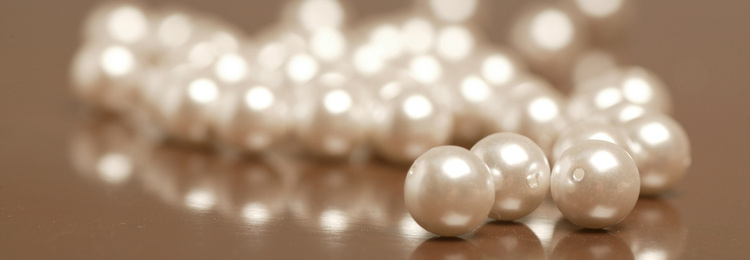
Another visual test is by looking around the drill hole. For the thread to pass through the pearls on a strand or real pearl necklace, holes are drilled into each pearl. If you carefully inspect this hole, you can determine whether or not your pearl is genuine. Specifically, you should keep an eye out for well-defined hole edges. On the other hand, the advantages of fakes are frequently rounded or rough. Usually, fake pearl drill holes have a thin covering that resembles lustrous paint. Around the drill holes, it's common to observe flakes or chipped coating that will ultimately peel off if the pearl is fake.
2. Touch Tests
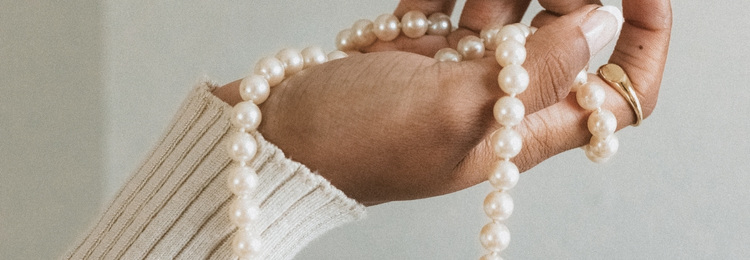
● Rub Pearls Against Each Other
Hold a few pearls with your fingers and softly rub them against one another. Check for any small frictional sensations. The real and cultivated pearls usually produce friction when they brush against one another as their outer layers of nacre are not smooth. Contrarily, fake pearls have smooth surfaces and easily rub past one another when touched together.
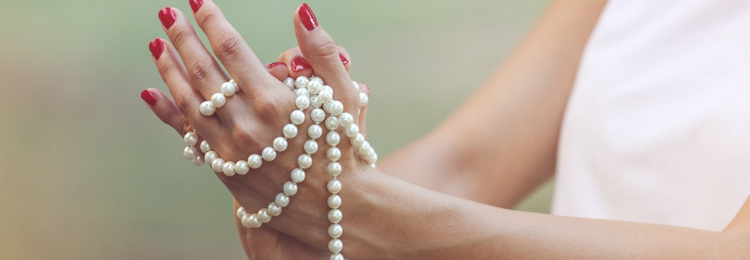
After this test, you have to check your hands. Two pearls' surface layers degrade somewhat when rubbed against one another. You could detect a fine, powdery, white residue on rubbing pearls. It is likely powdered nacre that indicates that the pearls are genuine.
● Do the Teeth Test
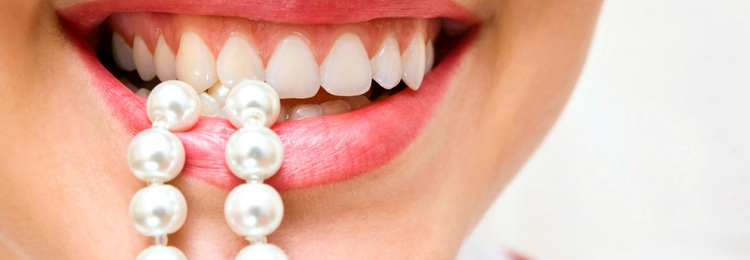
Another test to determine real pearls vs. fake pearls is the tenth test. It is one of the easiest ways to check whether the pearl is real or fake. All you have to do is grab pearls and rub them against your teeth. If you feel grittiness, then it is real. The Real pearls have a gritty texture that is comparable to sandpaper. If the pearl runs over your tooth smoothly, then they are fake.
However, clean your tooth before performing the test, as a recent meal's leftover food may produce deceptive results.
● Check Their Weight
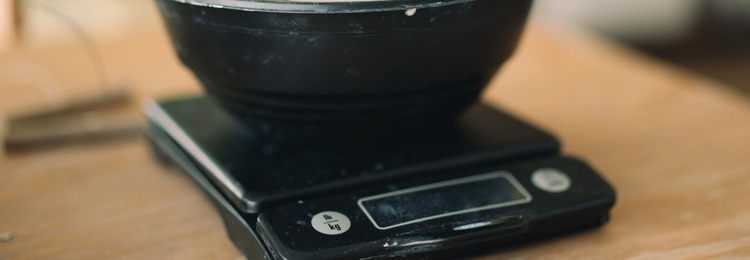
Another way to check whether the pearl is genuine is by feeling the pearl's weight in your hand. Bounce one or two pearls to get an idea of their weight. The majority of genuine pearls are somewhat heavy for their size. If they have a light insubstantial feel, they are fake.
It may often be very challenging to distinguish between real and fake pearls because there are so many convincing fake pearls on the market. However, you should be able to differentiate between pearls if you use a combination of the methods mentioned above to know whether they are real or fake.
● Take a Temperature Test
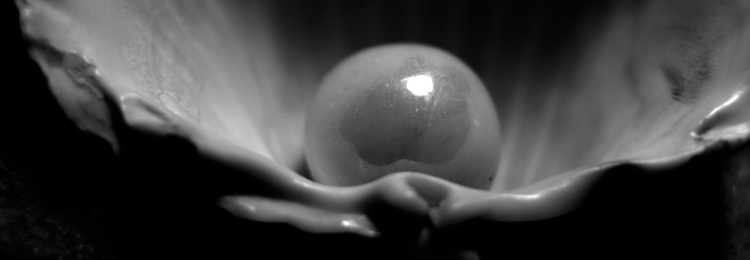
In this, you have to check the coolness of the pearl. Take a few pearls that no one has worn. Concentrate on how they feel against your skin while holding them in your hand. They are real if you feel cool for a few seconds once they warm up. Contrariwise, fake pearls will be close to room temperature and will warm up faster.
3. Advanced Tests
● Appraise by an expert
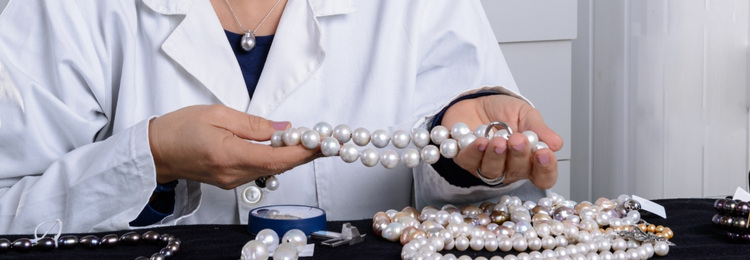
Although, the visual and touch test can not guarantee that it is correct. Yet, if you still want the pearls to be adequately tested, you can get your pearls appraised by an expert. A reputable jeweler or gemologist has the apt tools, techniques, and experience to check the authenticity of the pearls.
● Get an X-radiograph Test Done

The X-radiograph test takes a picture of the pearl from the inside. You can check whether the pearls are real. On the X-ray, Real pearls will appear as a semi-transparent grey color, while the fake one will have a solid positive print of white negative and a solid black.
It is essential to have a method for penetrating the surface of the pearl because there are many different types of pearls and differences in their values. However, through X-rays, you can get a wealth of information and discover the pearl's origin and significance.
● Refractometer Test
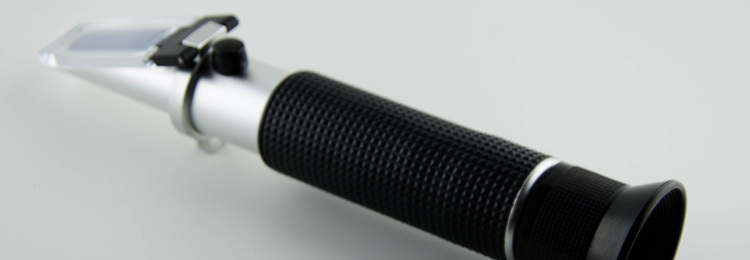
You can get a Refractometer Test - an advanced test established to check a pearl's authenticity. This test examines how much light it lets through the pearl. The "refractive index" of pearls typically ranges from 1.530 to 1.685 on a refractometer. Their difference value (0.155) is known as the birefringence of the pearl. It impacts how the pearl appears in the light. If the pearls have these characteristics, then the pearl is probably a real one.
Where to Buy a Real Pearls Necklace?
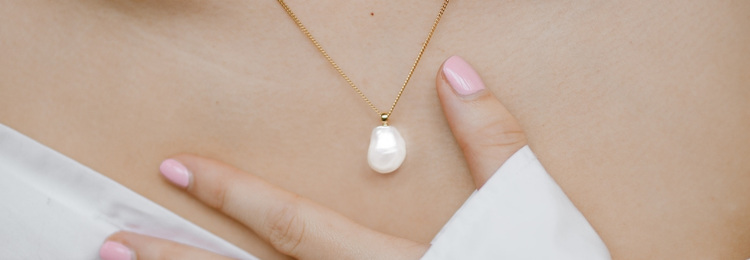
Indeed, pearls are beautiful and valuable. If you are thinking of adding a lovely Real Pearls Necklace to your collection, try shopping from top jewelers like Pure Pearls, Pearl Paradise, and The Pearl Source. These are some of the most popular and preferred top-quality and genuine pearl shops from which you can own authentic, certified, and beautiful jewelry.
How to Clean the Real Pearls Necklace?
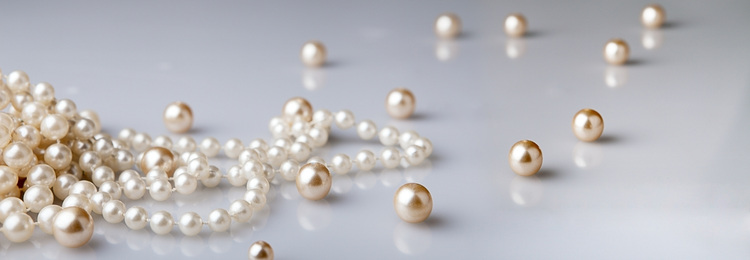
Cleaning the pearls can be more tricky than checking their authenticity. However, by knowing the right products and tips, you can use them to clean and maintain the pearls regularly. Here are the steps to clean the dirt off your Real Pearl jewelry:
● First, mix a gentle dishwashing liquid or a laundry detergent with warm water.
● Then, soak your jewelry for 10 to 15 seconds in a detergent and water mixture.
● After removing it from the soapy water mix, wipe the jewelry with a damp cloth.
● Then, rub the pearl jewelry with a smooth towel and lay it flat to dry.
However, to maintain your Real Pearls necklace daily, keep your jewelry after dressing, as the pearls might get dull from the make residue, perfume, hairspray, and other cosmetics. Always wipe them with a soft cloth after taking them off. All this information is essential to understand how phenomenal pearls are and how you can check their authenticity if you want to buy pearl jewelry.


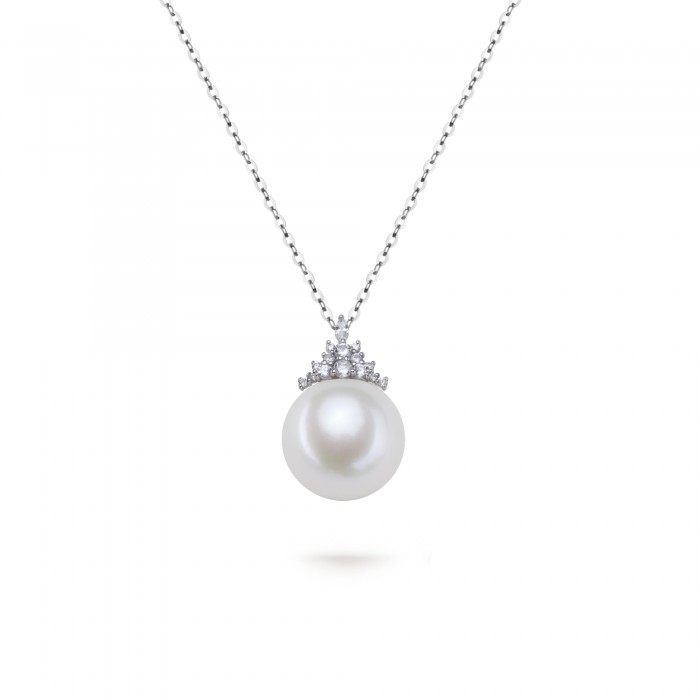
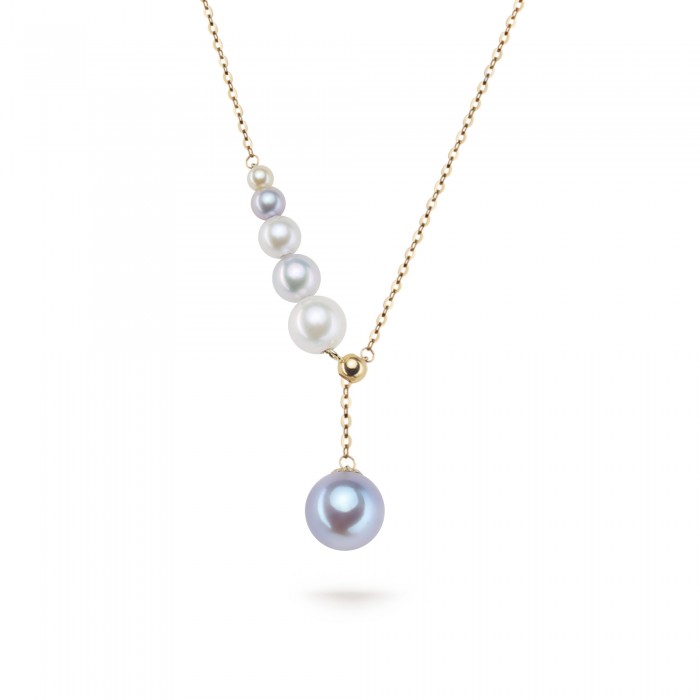
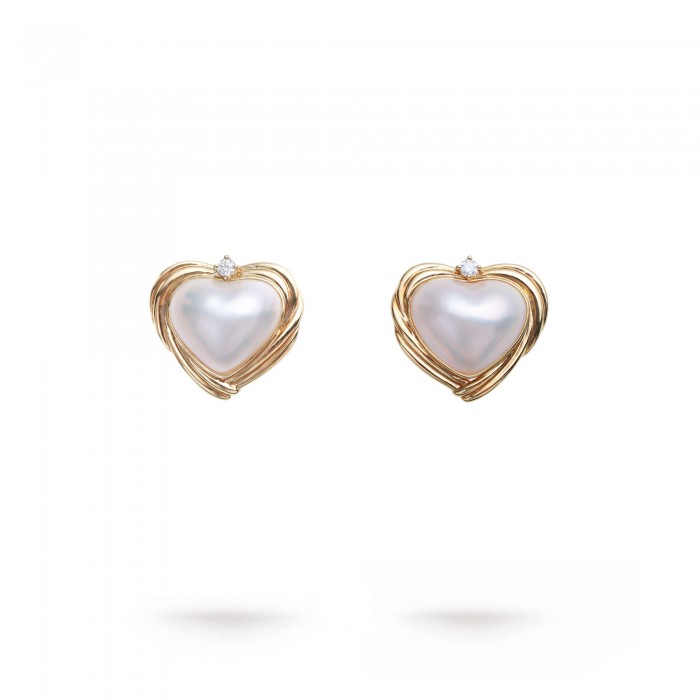
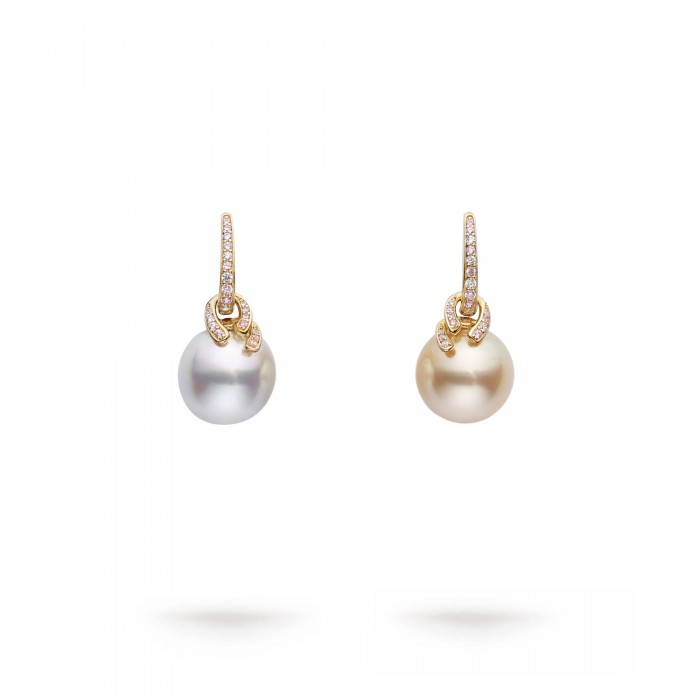
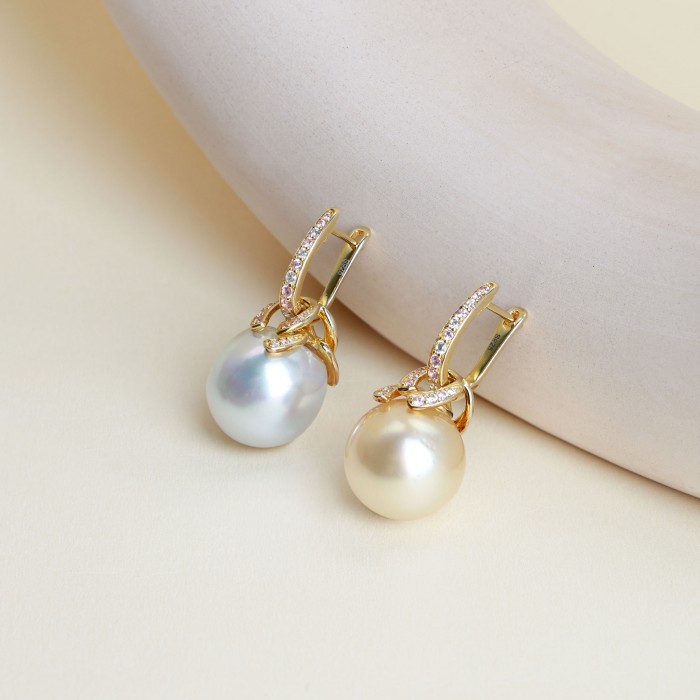
1 Comment(s)
It's very helpful! Thanks.
Leave a Comment